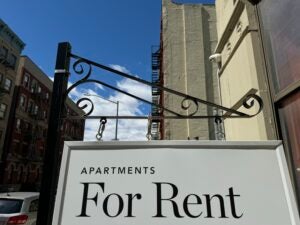Why is housing supply so low? Understanding the U.S. housing shortage




Key takeaways
- The housing shortage is essentially a problem of supply and demand: There is not enough housing supply to meet the demand of those who want to buy.
- The pandemic, inflation and elevated interest rates have all contributed to the shortage.
- New home construction dropped precipitously after the Great Recession, and it has yet to fully recover.
The housing shortage is probably not news to anyone who’s looked to buy a home recently. According to the National Association of Realtors (NAR), the supply of homes for sale in the U.S., typically measured in months of housing supply, reached a record low of just 1.6 months in January 2022. And while inventory has increased considerably since then — the figure was 3.5 months in February 2025 — the supply is still not enough to meet the demand.
Insufficient inventory may be obvious to house-hunters, but it’s a complex problem with no obvious solution. Here’s what to know about the U.S. housing shortage, what factors have caused it and how it impacts the overall real estate market.
Why is there a housing shortage?
Rising materials costs, supply-chain issues and labor shortages stemming from COVID all negatively impacted housing supply. But the problem actually existed long before the pandemic: Essentially, the U.S. has failed to keep up with the housing demands of a continually increasing population. (Particularly when it comes to millennials, a huge demographic who are now at prime homebuying age.)
One factor that exacerbates the shortage is the activity of institutional investors, who buy up housing inventory to flip or rent out for profit. Large investors purchased 14.8 percent of homes on the market in the first quarter of 2024 — a record-high percentage, according to a report from Realtor.com. That removes those units from the pool of availability for individual buyers.
14.8 percent
Source: Realtor.com
Another factor is the Great Recession, which took place around 2007–2008 but whose effects are still being felt today. Data from the St. Louis Fed suggests that this had a severe impact on housing inventory: New home builds had been on the rise in 2005, peaking in January 2006 with more than 2,200 housing units started that month. They then declined very sharply, hitting a low of just 478 in April 2009. The total number of new builds as of February 2025 had reached 1,501, but homebuilding totals have yet to catch up to pre–Great Recession levels.
The high-interest-rate environment of the past few years has also complicated matters. Hopeful buyers saw their purchasing power plummet as mortgage rates increased in late 2023 to their highest point in more than 20 years. “When rates hit 6 percent, we saw many aspiring homebuyers put their search on hold temporarily,” says Shmuel Shayowitz, president and chief lending officer of mortgage lender Approved Funding. “At 7 percent, we saw a bigger tipping point where people exited the market en masse.”
Elevated mortgage rates — the average 30-year fixed rate was 6.76 percent as of mid-March, according to Bankrate’s weekly survey of large lenders — continue to deter homeowners from selling, for fear of giving up their locked-in low rates. “Many homeowners with mortgages are currently locked in at sub-5 percent interest rates,” says Sean Roberts, CEO of homebuilding platform Villa. “Many who might otherwise be sellers are simply choosing to stay put, which is further limiting available-for-sale existing homes in today’s market.”
What is a normal amount of inventory?
Traditional wisdom states that the real estate market needs 5 to 6 months of housing supply to be balanced, or not leaning toward either a buyer’s market or seller’s market. NAR existing-home-sales data showed a 3.5-month housing supply level as of February 2025, which is much healthier than the record low of 1.6 months but still continues to favor sellers.
Complicating the problem further is the tendency of particularly popular markets to draw in new residents faster than they can create new housing to accommodate them. NAR’s Housing Shortage Tracker illustrates the number of new housing permits issued versus the number of new jobs created in 172 metro areas. On average, one new permit is issued for every two new jobs across these metro areas as of February 2025, and that number is much higher in some areas.
How a housing shortage affects buyers and sellers
Both homebuyers and sellers feel the impact of insufficient housing inventory. Many would-be sellers are unable to list their homes because they can’t afford the price of a new property at the current mortgage rates. As a result, a lot of homeowners who would prefer to downsize, upgrade or simply move on are waiting it out. That keeps those homes off the market and out of the inventory pool.
Less than one-third of home listings are affordable for the typical U.S. household, down from more than half before the pandemic, according to Redfin data.
Buyers are likely to bear the brunt of the problem, though. A lack of housing options creates a very competitive market, in which many buyers must compete for few available properties. This often results in bidding wars and drives up home prices. In fact, less than one-third of home listings are affordable for the typical U.S. household, down from more than half before the pandemic, according to a recent Redfin study. This can also leave buyers with little power and fewer protections in the transaction, as sellers have their choice of other hopefuls who might be willing to waive contingencies and accept less advantageous terms.
How long will the shortage last?
Given the complex nature of the situation, the current housing shortage is likely to persist for some time. While lower interest rates may help, that alone is unlikely to solve the problem completely. Increases in total housing builds would also help, though high materials costs and labor shortages still persist.
The data on housing starts is mixed, and has been for some time now. For instance, new residential construction starts for privately owned housing in February 2025 were up 11.2 percent from the previous month but down 2.4 percent year-over-year, according to joint data from the U.S. Census Bureau and U.S. Department of Housing and Urban Development. It may take some time for the country’s housing inventory to reach sufficient levels for demand.
”It could take a while for the U.S. to recover from the current housing shortage,” says Roberts. “Houses take time and capital to build, plus there are other factors at play. Unfortunately, there is no short-term solution.”
Why we ask for feedback Your feedback helps us improve our content and services. It takes less than a minute to complete.
Your responses are anonymous and will only be used for improving our website.




